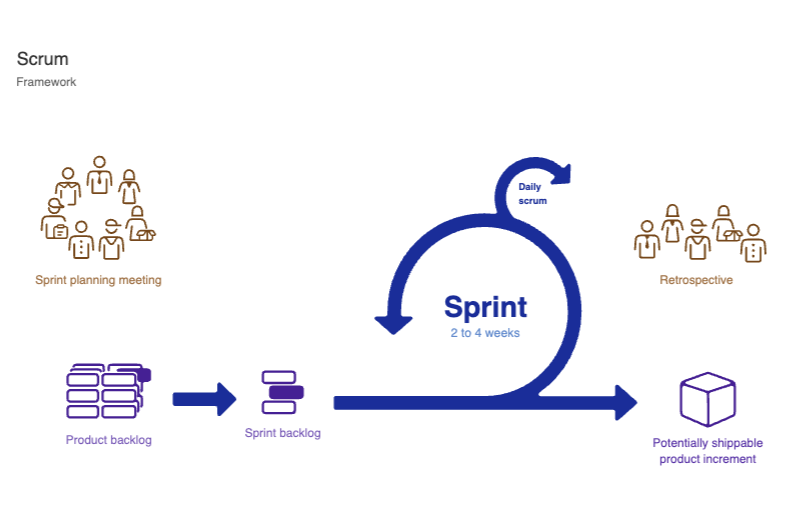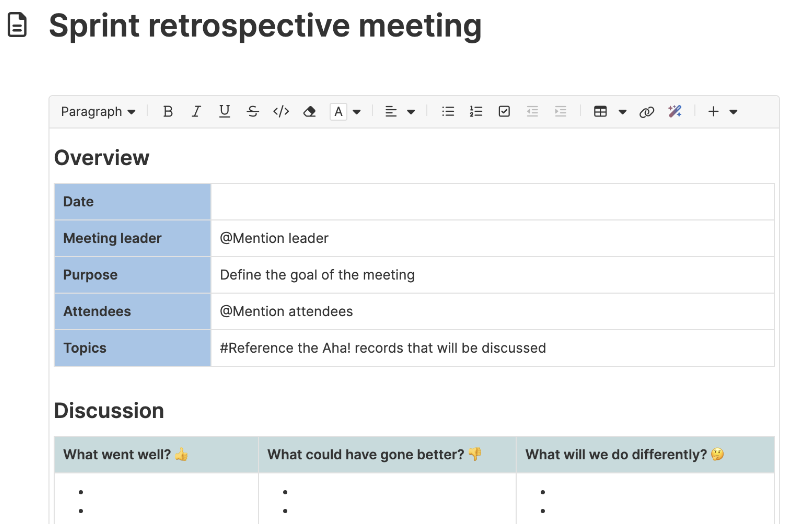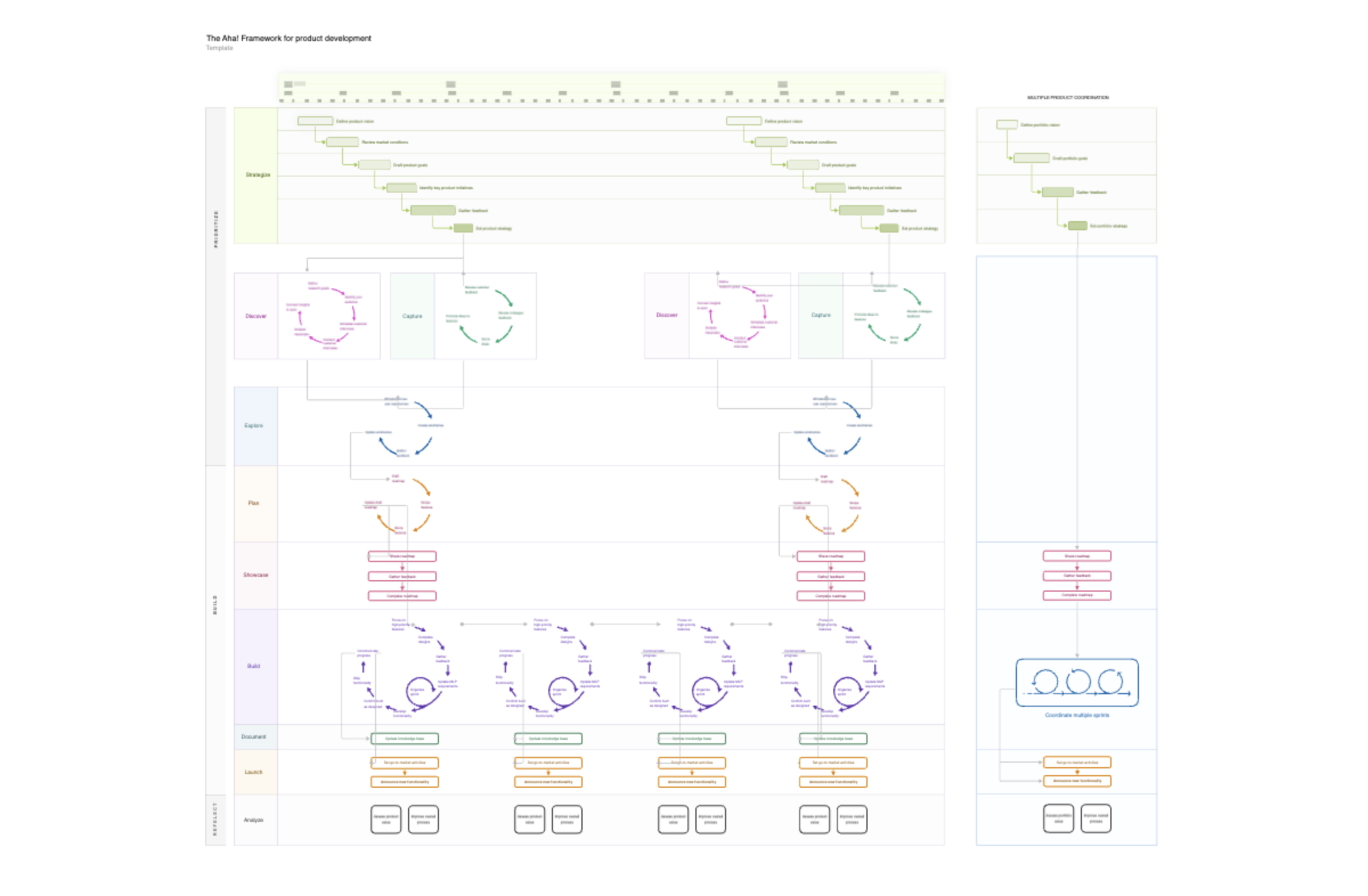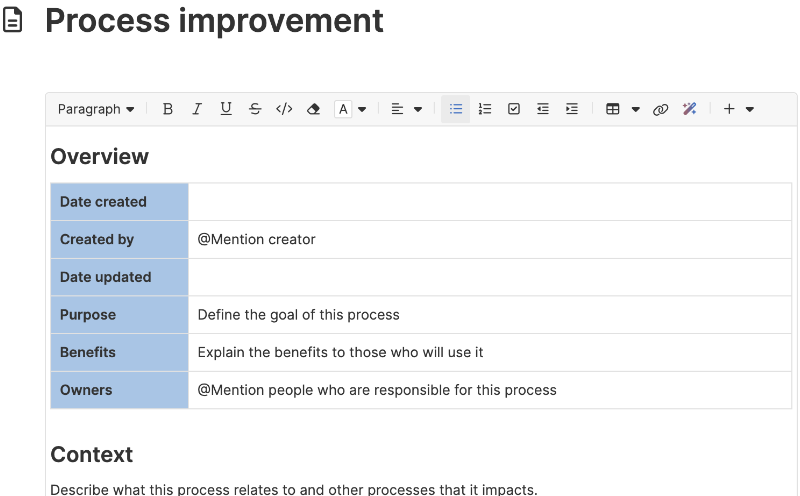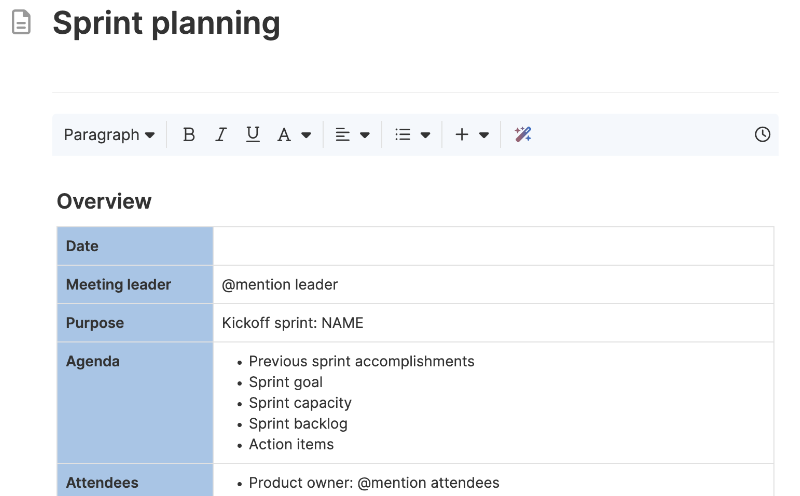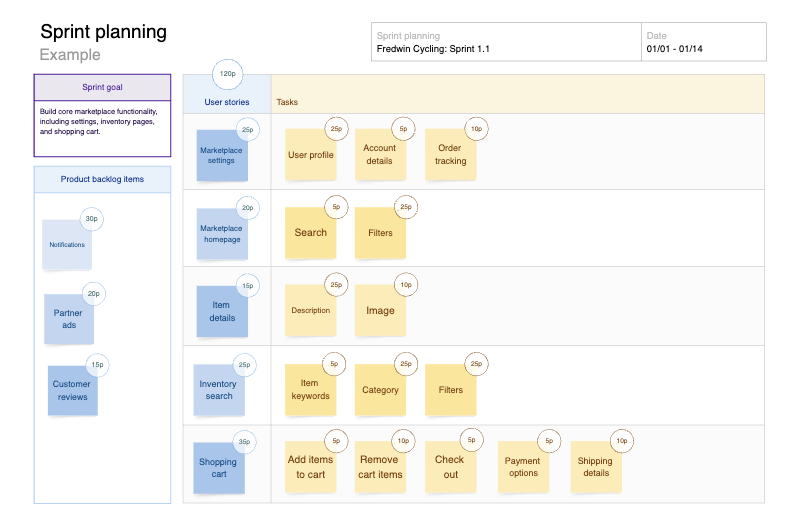Sprint retrospective template
Reflect as a team and plan improvements for your next sprint
Use template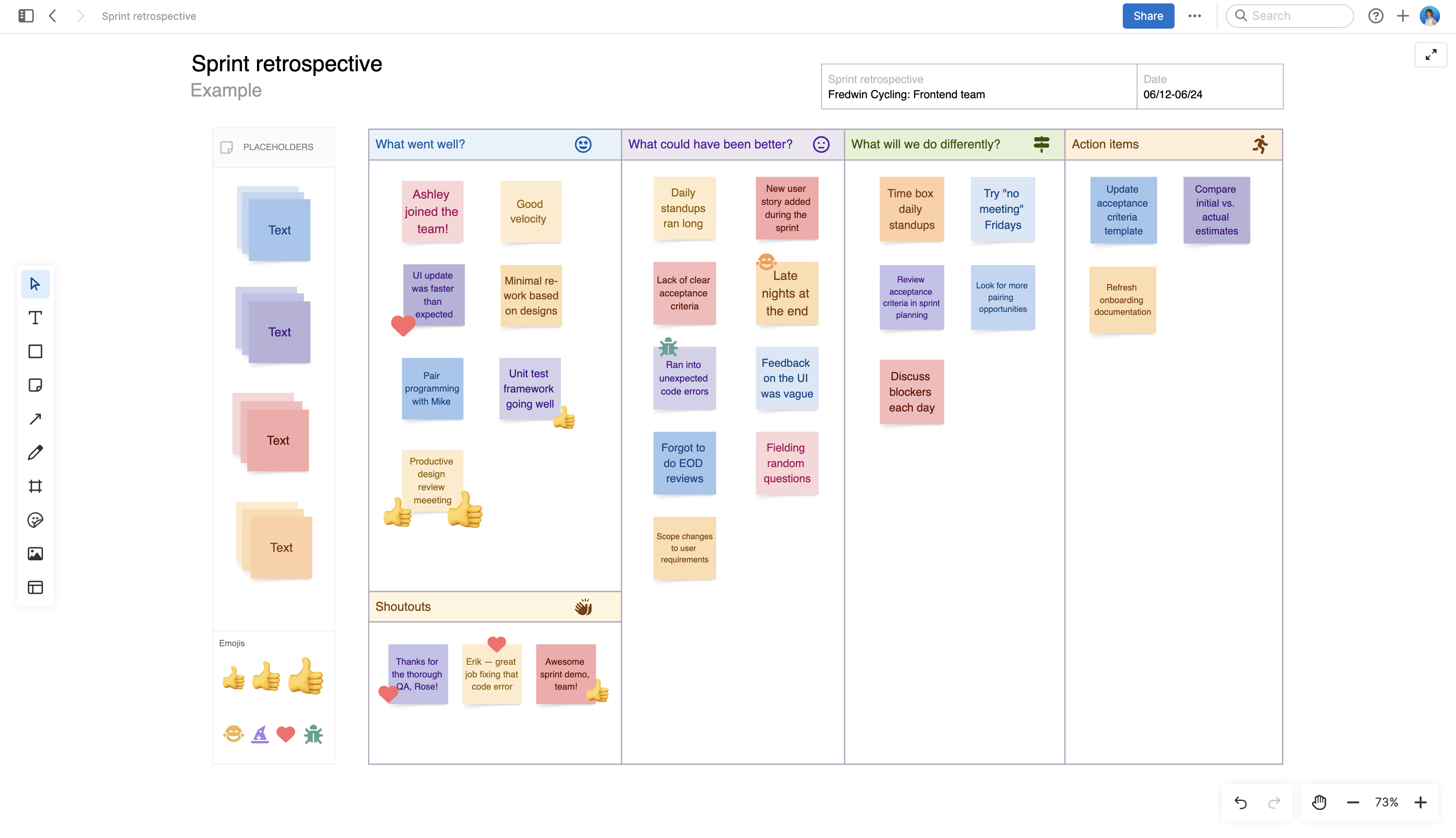
About the sprint retrospective template
Ever feel like your team is moving fast, but not always getting smarter? Sprint retrospectives are your built-in pause button — a chance to unpack what works, what does not, and what deserves a shoutout. This template keeps the conversation focused with clear lanes for every topic and space for honest feedback (and a little celebration!). By the end, you will have tangible insights and a shared plan for improving together.
Included in the sprint retrospective template
This sprint retrospective template includes built-in capabilities such as:
Columns for each discussion topic — plus a dedicated shoutouts lane for team kudos
Sticky notes, color-coding, and emojis to capture reactions (and keep things lively)
Inline comments to clarify, question, or riff on ideas in real time
A pre-filled example and best practices for quick onboarding
Easy action-item tracking with owner assignments so nothing gets lost
How to use the sprint retrospective template
Use this template at the end of every sprint to help your team reflect, learn, and level up. Add the sprint details at the top, then invite everyone to drop sticky notes in the What went well?, What could have been better?, and
What will we do differently? columns. Anonymity is optional, but candor is required. Do not skip the Shoutouts section — a little gratitude goes a long way for morale.
Cluster similar notes, use color-coding for themes, and sprinkle in emojis for emphasis. Comment in real time to clarify or challenge assumptions. As the conversation wraps up, move concrete action items into the final column, assign owners, and set due dates if you want true accountability.
When you are done, export the board or link it in your workspace so everyone can access it. Pro tip: Convert agreed-upon action items straight to activities in Aha! Roadmaps. That way, the follow-through actually happens.
Best practices
A thoughtful sprint retrospective is where real team improvement happens — not just venting or box-checking.
Create psychological safety, not just space: Make it clear that feedback is about the work, not the person. When people know candor will not backfire, you get the insights that matter most.
Look for patterns rather than one-offs: Review a few past retros before you start. If the same pain point keeps cropping up, it is not an accident — it is your next priority.
Demand clarity for every action item: If an action is vague, it will not get done. Assign a single owner, agree on what "done" looks like, and make it visible in your workflow tool (like Aha! Roadmaps).
Change up the format to keep it fresh: Surprise your team now and then — try a silent brainstorm, run a "retro roast" where you celebrate mistakes, or let someone else facilitate. Novelty keeps engagement (and honesty) high.
FAQs about the sprint retrospective template
Why is a sprint retrospective important?
Sprint retrospectives are a team's chance to pause and examine how you work, not just what you did. By surfacing friction points and missed opportunities, the team can focus on meaningful improvements each cycle — instead of just rolling into the next sprint without learning.
What are some best practices for running a great sprint retrospective?
Set clear expectations: This is a working session, not a complaint fest. Invite candid input, but keep the discussion focused on issues the team can actually address. Wrap up by confirming what will change and who owns each action, then revisit progress in the next retro.
Who is this sprint retrospective template for?
Any team that wants to learn and improve together can benefit, whether you are building software or wrangling cross-functional projects. This template is especially handy if you want to organize feedback and make decisions quickly.
Is this template free to use?
Yes. To use this sprint retrospective template, sign up for a free 30-day trial of Aha! Whiteboards. (You can also try this template in Aha! Roadmaps if you need a complete product management solution.) Easily customize the template to suit your needs, then share it with as many people as you want (for free) to streamline collaboration.
